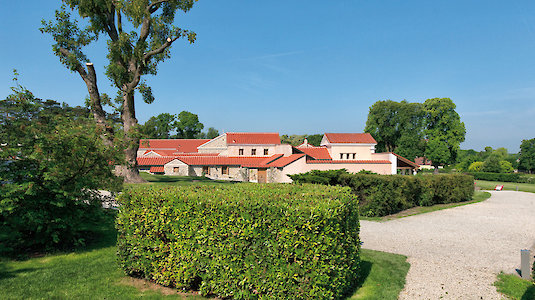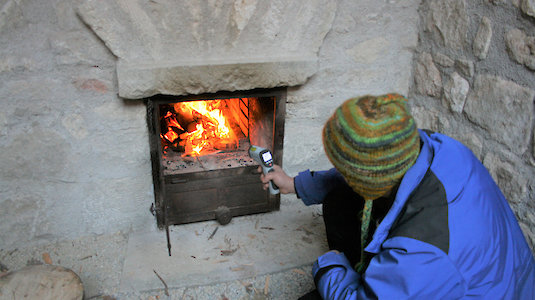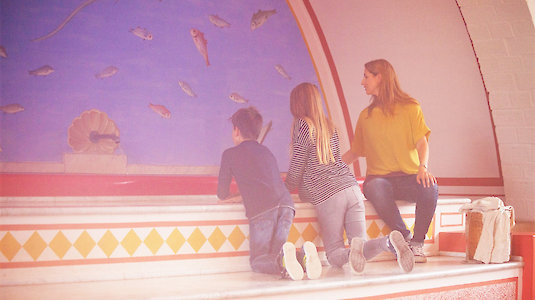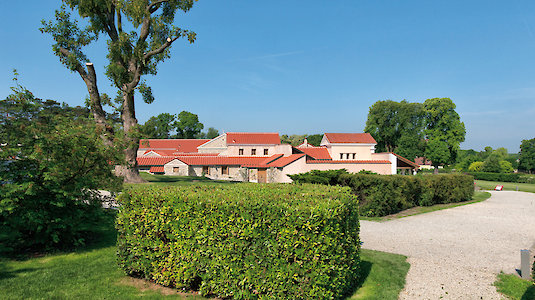Sustainability in the Roman city of Carnuntum
In the Roman town of Carnuntum, ecological sustainability plays a very important role. Therefore, it has applied for the Austrian Ecolabel. But: Was there also such a thing as environmental awareness in Roman antiquity? Read interesting facts about this here.
Because the world demands gold.
"Here, namely, one digs through the earth in the hunt for wealth, because the world demands gold, silver, amber and copper; there, for the sake of ostentation, precious stones and dyes for walls and wood; elsewhere, for the sake of daring drift, iron, which is valued even more than gold in war and murder." These critical words about the disrespectful, uninhibited and merciless treatment in antiquity of the "earth" and people in the search for and extraction of gold, silver and iron, driven by delusions of prestige, come from the Naturalis Historia (XXXIII, I, 1-3) by Pliny the Elder, who lived in the 1st century AD. His observations are still (unfortunately) cutting-edge in 2021.
The sources show "that there was very little environmental awareness in ancient times. Entire stretches of land in North Africa, the Iberian Peninsula and the Balkans were deforested and karstified in order to have raw material for building, for ships, for metal extraction, for mining, for heating the large thermal baths," tells Dr. Marion Großmann from the Roman city of Carnuntum in Petronell-Carnuntum, Lower Austria (www.carnuntum.at). She is responsible for cultural education and quality management there - and has also read up on Pliny the Elder and other ancient authors for us. Ms. Großmann also accompanies the museum on its way to certification with the Austrian Ecolabel.
The garbage of antiquity.
Ms. Großmann continues: "Miserable conditions prevailed in the large cities of antiquity: garbage was tipped out of the windows of the tenements or simply thrown into the river. Canals were not available in all cities, and when they were, they were often hopelessly cluttered. In Athens and Rome, even in ancient times, there was a bestial stench." Nevertheless, there were serious differences to today's environmental situation: "The effects of the exploitation and pollution of the environment were only not so destructive because they took place mainly locally and also did not reach the dimensions of the technical possibilities as is the case today," notes Ms. Großmann. And adds: "Most of the waste was organic and therefore not environmentally harmful to the same extent as it is today. Moreover, the majority of environmental crises were regional, as opposed to today's global threat."

Carnuntum in Upper Pannonia.
Carnuntum was the capital of the Roman province of Upper Pannonia, located on the border of the Roman Empire, and was important from the 1st to the 4th century AD. Today, visitors can see reconstructed ancient houses in the so-called Roman Quarter of the "Roman City of Carnuntum", and two amphitheaters and the internationally known Pagan Gate are also accessible. In the "Archaeological Museum Carnuntinum", the treasure house of Carnuntum in Bad Deutsch Altenburg, changing exhibitions can be seen. Currently, the Roman military is the focus of the exhibition "The Eagle of Rome - Carnuntum and the Army of the Caesars".
Sustainability in Carnuntum.
While environmental awareness was very low in ancient times, ecological sustainability has played an important role in the Roman city of Carnuntum for quite some time and will do so to an even greater extent in the future (www.carnuntum.at/de/roemerstadt-carnuntum/nachhaltigkeit/nachhaltigkeit-in-carnuntum). Already during the construction of the reconstructions only natural building materials were used. In ongoing maintenance measures, attention is paid to regionality. "These measures are only examples of a consistently lived sustainability strategy. Applying for the Austrian Ecolabel was thus the next logical step in continuing the sustainability concept in a structured manner," clarifies Managing Director Dr. Markus Wachter.

All fire & flame.
What and how can visitors learn from antiquity in terms of energy use in Carnuntum? "There is already an educational program in cooperation with the Bruck an der Leitha Energy Park called 'Fire & Flame'. It compares the use of renewable energy in antiquity with that in the present. In addition, all educational programs are currently being updated to include sustainability topics more broadly."
Keyword fire.
How were private houses heated in Roman antiquity, how was cooking done in households? "Roman houses in Rome and the provinces were predominantly heated with wood. Even in private homes, underfloor heating served for warm floors and warmed the walls at the same time. In the Roman quarter of Carnuntum, authentic hypocaust heaters were installed in the Villa Urbana as well as in the house of Lucius, and they are in regular use. Heating is done exclusively with wood, as in ancient times. The cooking places in the houses of the Roman Quarter were also rebuilt by means of experimental archaeology and are in regular use."

Past. Present. Future!
We would like to thank Dr. Marion Großmann and Dr. Markus Wachter for the interesting conversation, for their competent answers to the question complex "Antiquity and Environment".
A contemporary museum preserves the past, lives actively in the here and now and gives important impulses for the future. The Roman city of Carnuntum has taken the right path of sustainability: this is the right way to run a museum! It is therefore to be hoped that many Austrian museums will follow this example.
Author: Dr. Helmuth Öhler
Photo credits:
1 Roman city of Carnuntum. © atelier olschinky
2 First heating experiments in the thermal baths. © RSC
3 Therme Caldarium. © atelier olschinsky
